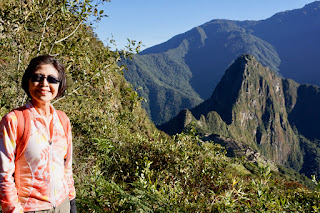We attended a Machu Picchu and Galapagos Tour offered by Friendly Planet in July/August 2018. These two attractions have been on our bucket list for quite a while, we finally found a tour which covers both attractions. The following is our detailed itinerary.
July 23, 2018 - Traveled to Miami to join the tour's red-eye flight to Lima, Peru
July 24, 2018 - Arrived Lima and checked into hotel, then free time to tour Lima City
July 25, 2018 - Lima City Tour
July 26, 2018 - Flew to Cusco, visited Sacred Valley in the afternoon
July 27, 2018 - Took Vistadome train to Machu Picchu, visited Machu Picchu
July 28, 2018 - Optional tour to Machu Picchu Mountain, back to Cusco
July 29, 2018 - Self guided Cusco City Tour, guided tour of Sacsayhuaman and Puka Pukara
July 30, 2018 - Self guided Cusco City Tour, flew to Lima
July 31, 2018 - Flew to Quito, Peru
August 1, 2018 - Visited Middle of the World site in Peru
August 2, 2018 - Flew to Baltra Island of Galapagos and embarked Santa Cruz II
August 3, 2018 - Galapagos Cruise: Isabela Island & Fernandina Island
August 4, 2018 - Galapagos Cruise: Santa Cruz Island
August 5, 2018 - Galapagos Cruise: Floreana Island
August 6, 2018 - Galapagos Cruise: Baltra Island, flew to Quito
August 7, 2018 - Visited Otavalo Market, back to Quito


















































